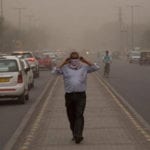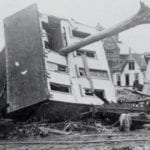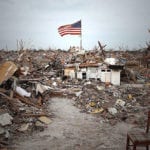 Creepy
Creepy  Creepy
Creepy  Technology
Technology 10 Scientific Breakthroughs of 2025 That’ll Change Everything
 Our World
Our World 10 Ways Icelandic Culture Makes Other Countries Look Boring
 Misconceptions
Misconceptions 10 Common Misconceptions About the Victorian Era
 Mysteries
Mysteries 10 Strange Unexplained Mysteries of 2025
 Miscellaneous
Miscellaneous 10 of History’s Most Bell-Ringing Finishing Moves
 History
History 10 Great Escapes That Ended Right Back in Captivity
 Weird Stuff
Weird Stuff 10 Fascinating Things You Might Not Know About Spiders
 Food
Food 10 Everyday Foods You Didn’t Know Were Invented by the U.S. Military
 History
History 10 Odd Things Colonial Americans Kept at Home
 Creepy
Creepy 10 More Representations of Death from Myth, Legend, and Folktale
 Technology
Technology 10 Scientific Breakthroughs of 2025 That’ll Change Everything
 Our World
Our World 10 Ways Icelandic Culture Makes Other Countries Look Boring
Who's Behind Listverse?

Jamie Frater
Head Editor
Jamie founded Listverse due to an insatiable desire to share fascinating, obscure, and bizarre facts. He has been a guest speaker on numerous national radio and television stations and is a five time published author.
More About Us Misconceptions
Misconceptions 10 Common Misconceptions About the Victorian Era
 Mysteries
Mysteries 10 Strange Unexplained Mysteries of 2025
 Miscellaneous
Miscellaneous 10 of History’s Most Bell-Ringing Finishing Moves
 History
History 10 Great Escapes That Ended Right Back in Captivity
 Weird Stuff
Weird Stuff 10 Fascinating Things You Might Not Know About Spiders
 Food
Food 10 Everyday Foods You Didn’t Know Were Invented by the U.S. Military
 History
History 10 Odd Things Colonial Americans Kept at Home
10 Devastating Unnatural Disasters
This is a list of 10 of the worst disasters in our history, however the devastation caused by these disasters have been as a direct result of man-made accomplishments. Reader discretion is advised. I have deliberately not included tragedies that are a direct result of acts of war as they would account for the whole list. So as to not bore the reader too much I have varied the content as much as possible, and I have not concentrated on one specific type of accident, e.g. mining disasters. If you feel something is missing it is probably because I have seen it on a list before and wanted original content. When researching I came across hundreds of accidents that I have never heard of, so, depending on how this list is received I may write a follow-up.
The deadliest aviation accident in history occurred at 5:07pm on March 27th 1977, and came about as a result of a bomb explosion in Gran Canaria airport. Several planes were diverted to Tenerife North Airport, Los Rodeos, including KLM Flight 4805 and Pan Am Flight 1736, both Boeing 747s. This unscheduled surge in air activity meant that many aircraft were forced to park on the taxiway, causing blockages and complicating matters even further. This situation could have been manageable, however a dense fog formed over the airport, greatly reducing visibility. The two above-mentioned aircraft taxied onto the only runway in order to position themselves for takeoff, the dense fog meant that neither aircraft nor the control tower were visible. The control tower gave a clearance to the KLM flight which specified the aircraft’s departure route and gave instructions of what to do after take-off, however it was not a specific clearance for actual take-off. The co-pilot’s reply was “We’re now at take-off,” to which the control tower replied “OK.”
It appears that the flight crew meant that they were actually beginning their take-off, while the controller took it to mean they were in take-off position, awaiting final clearance. He added, “Stand by for take-off, I will call you.” The Pan Am flight transmitted a simultaneous message stating that they were not clear of the runway but mutual interference meant the messages were not transmitted. As the KLM flight increased speed for takeoff, the two crews eventually saw one another and the Pan Am captain applied full power and attempted to veer sharply onto the fourth exit. The KLM captain attempted a steep climb, scraping the plane’s tail along the runway for 65 feet. It left the ground, but its underside struck the Pam Am plane’s upper fuselage, ripping it apart. The KLM plane stalled and came down some 500 feet further on, then slid a further 1000 feet. The collision left a total of 583 dead, this included all 248 onboard the KLM flight and 335 of the 396 passengers and crew on the Pan Am flight.
Fatalities – 583
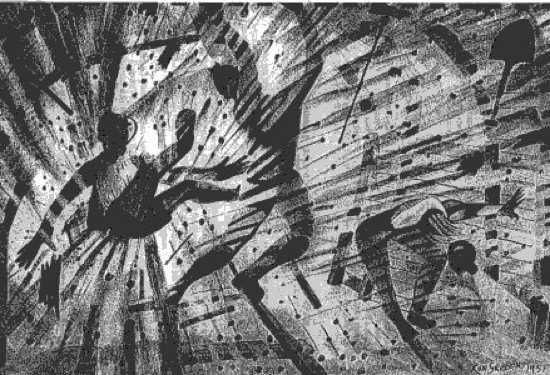
Located in Liaoning China, the Benxihu iron and coal mine was not a nice place to work at the best of times. During the Second World War, Japanese forces invaded Liaoning and took control of the colliery, here they forced the miners to work in deplorable conditions: the laborers were regularly beaten, food was scarce and Typhoid and Cholera flourished.
On April 26th 1942 a build-up of gas caused an explosion in one of the shafts, resulting in mammoth flames bursting from the entrance. The Japanese guards quarantined the site, preventing friends and family from assisting by erecting electric fences around the perimeter. Over the next 10 days workers cleaned the shaft and carried corpses out to mass graves. Many of workers were unidentifiable from burns suffered during the explosion but most had died from carbon monoxide poisoning caused by the isolation of ventilation after the initial explosion. The Japanese kept very mum about the accident, initially dedicating few words and reporting the death toll at 34. Later reports, including one carried out by the Soviet Union, reported that the death toll was around 1,549, including 31 Japanese, one third of the total work force.
Fatalities – 1,549
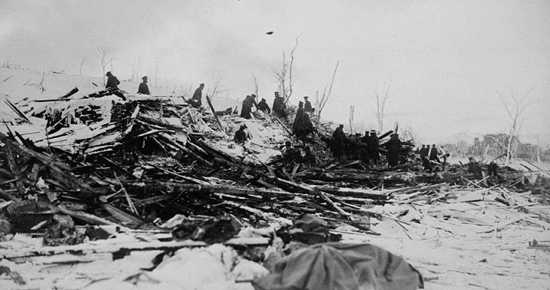
The world’s largest man-made accidental explosion occurred on December 6th 1917 in ‘The Narrows’ of Halifax Harbour. As the Norwegian vessel Imo attempted to leave the channel it collided with the Mont-Blanc, a French Cargo vessel carrying 2,300 tons of wet and dry picric acid, 200 tons of TNT, 10 tons of gun cotton and 35 tons of benzoyl – a highly explosive mixture. The collision occurred at 8:44am, when both vessels made a series of ill judged manoeuvres, the sparks generated by the massive amounts of steal rubbing against one another ignited benzene on board the Mont-Blanc and started a fire. The 40 man crew of Mont Blanc, unable to fight the fire, abandoned ship. Hundreds gathered on the shores to witness the huge flaming vessel approach the shoreline, as the Mont-Blanc grounded, it ignited munitions on the pier. Within 20 minutes of the initial collision the Mont-Blanc exploded with 3 kilotons of force (1/5 of the atomic bomb dropped on Hiroshima); the explosion created a fireball that rose roughly 2km into the air, spreading molten metal for miles around. An 18m tall tsunami battered the shoreline dragging onlookers into the water. Churches, houses, schools, factories, docks and ships were destroyed in the swath of the blast. Children who had stopped on their way to school, workmen lining the windows of factories, families in their homes, sailors in their ships – died instantly. Injuries were frightful, blindness from splintering glass added to the shock and bewilderment.
The shockwaves caused stoves, fires and lamps to fall within structures, spreading fire throughout the community, trapping those who had survived the explosion within their homes. 326 acres of land were utterly destroyed. Buildings were damaged up to 16km from the explosion and it was heard up to 316km away. Chunks of metal weighing well over a ton were thrown nearly 4km from the Mont-Blanc. 1,600 people were killed in the initial blast and Tsunami, 9000 were injured. 1,630 houses were destroyed and 12,000 were damaged. Final fatalities were officially recorded as 1,950. All but one of the crew of the Mont-Blanc survived the disaster.
Fatalities – 1,950
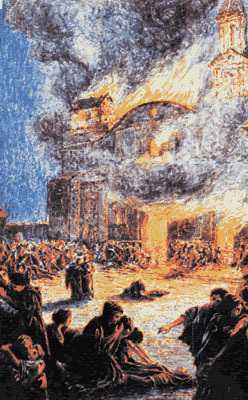
The worst fire disaster in history occurred in Santiago, Chile on December 8th 1863. The Church of the Company of Jesus was celebrating the Feast of Immaculate Conception when one of the many gas lamps adorning the scene ignited a veil draping from a wall. A helpful onlooker leapt into action and attempted to extinguish the fire by using another cloth, but instead spread the fire to the wooden roof. Devastatingly, the doors had been closed to allow the church to reach maximum capacity, as they opened inwards, and as the panicking worshipers pushed towards the exit, the doors could not be opened. As the panic increased, the people at the front of the mass were crushed to death and eventually a wall of bodies accumulated in front of the door, making it nigh on impossible to reach freedom. Three hours after the fire started, the roof collapsed, killing the remaining survivors. Between 2,000-3,000 people were killed, mostly women, entire families were wiped out and the damage to the bodies made most unidentifiable – meaning they had to be buried in mass graves. It took 10 days to remove all the bodies from the church. The results of this event can be seen today as Chilean fire brigades are composed of volunteers that were formed in the aftermath of the tragedy.
Fatalities – 2,000-3,000
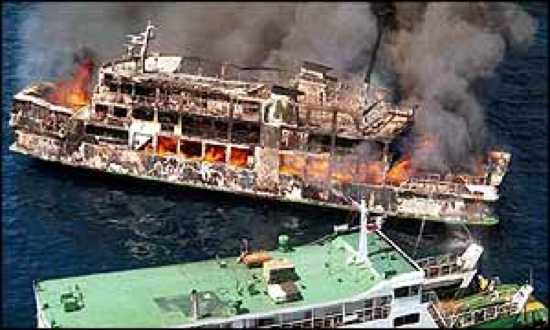
When people think of ocean liners sinking they instantly think of the Titanic, however this was not the deadliest disaster of its kind – in fact it has the 5th largest amount of casualties. The deadliest ferry disaster in History occurred on December 20th 1987. The MV Dona Paz was en route to Manila in the Philippines; it was officially carrying its maximum passenger manifest of 1,583 passengers and 58 crew.
The Dona Paz collided with an oil tanker MT Vector, which was carrying 8,800 barrels of gasoline. Survivors say that the weather that night was clear but the sea was choppy. Upon collision the Vector caught fire and the flames spread rapidly throughout the ship. The lights onboard the Dona extinguished and as there were no life jackets on board the vessel (or they were locked away), the passengers were forced to jump overboard into shark-infested waters. It was eight hours before authorities were notified of the accident, and it took a further eight hours to organize a search and rescue operation. 26 survivors were retrieved from the waters including two crew of the Vector.
Although official manifests showed there were 1,583 passengers on board, anonymous officials’ testimonies back up passenger accounts that the vessel was carrying around 3000-4000 passengers and they were sleeping in corridors in cots with up to four people in each. This is more than likely due to the fact that only one of the 21 bodies recovered after the accident was listed on the manifest. 2000 were reported missing by friends and family and were believed to have been on the vessel, none of these were on the manifest.
The official Death toll was 1,749 but a more realistic estimate of deaths, and one that the World Almanac records as the deadliest peace time maritime disaster of the 20th century, records 4,341 fatalities.
Fatalities – 1,749-4,341
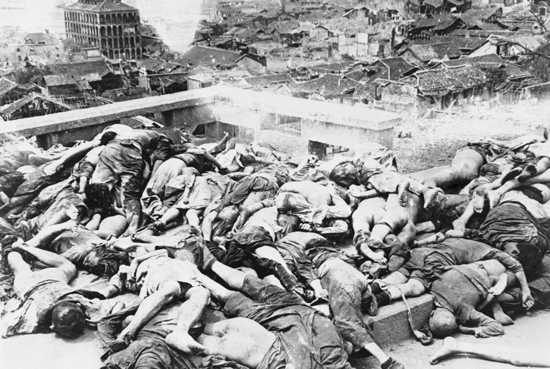
During the Second World War, 5,000 bombing runs were conducted by the Japanese Army and Navy on the Chinese capital of Chongqing, in all, 11,500 bombs were dropped. Unlike today’s bombing sorties that concentrate on tactical targets, the bombing runs on Chongqing were seen as a terror campaign, targeting residential areas, hospitals and schools. During a particular aggressive bombing run on June 5th 1941, thousands of residents fled into bomb shelters. The sortie lasted over 3 hours, and the large number of personnel squeezed into the shelters resulted in over 2,500 (some estimate 4,000) people suffocating whilst waiting for the bombings to end. A museum has now been set up near the entrance to the tunnel and in remembrance of the victims, an air raid siren is sounded every year on June 5th. I have included this as the tragedy was not as a direct result of the bombing run.
Fatalities – 2,500-4,000
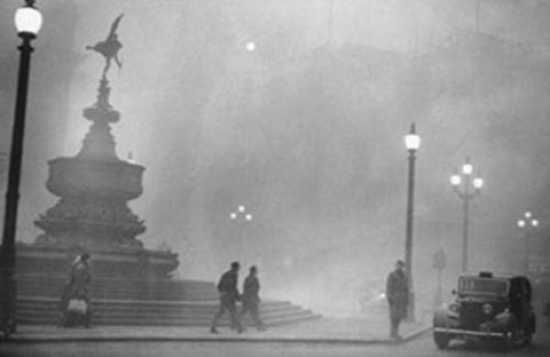
London has been plagued with pollution since the industrial revolution; these events have been collectively referred to as ‘Pea Soupers’ due to the greenish color they embody. One of the most extreme pollution events occurred in 1952. It was known as ‘The Great Smog of ’52’ or ‘The Big Smoke’ and lasted for five days at the beginning of December. The cold winter meant that Londoners were forced to burn more coal that they would normally; this coal emitted a larger amount of Sulphur Dioxide in comparison to coal used today. These fumes combined with pollution from newly developed diesel car exhausts, and the effects of northwesterly winds bringing already polluted air from across Europe, created an effect reminiscent of the adaptation of the Steven King book ‘The Mist’ with smog filling the city and seeping into indoor areas causing problems with the human respiratory tract. The event lead to the clean air act of 1956 and is considered one of the worst pollution events in history. 4,000 people were killed in the weeks following the smog with a further 100,000 taken ill. Recent research puts fatalities closer to 12,000.
Fatalities – 4,000-12,000

Between the 2nd and 3rd of December 1984 the Union Carbide pesticide plant in Bhopal India leaked Methyl Isocyanate (MIC). This tragedy was a result of water entering a tank containing around 42 tons of MIC, this created a chemical reaction that raised temperatures to over 200°c, increasing the pressure, the tank vented the toxic gas which caught in the Northwesterly wind passing over Bhopal
Initial exposure to MIC results in coughing, vomiting, eye-irritation and a sense of suffocation. Locals awoke in a panic when experiencing these symptoms and began to run from the plant, the increase in breath only hastened their unfortunate fate. Acute symptoms include burning in the respiratory tract and eyes, breathlessness, stomach pain and death was caused by choking and circulatory collapse. 170,000 people were treated for symptoms of MIC poisoning, mass funerals and cremations were held with bodies disposed of in the Narmada River. Independent organizations record 8,000 dead in the immediate days following the incident, and a further 8,000 have died since (other estimates put it at around 30,000). 100,000 to 200,000 have suffered permanent illness due to the leak. To this day groundwater and soil in areas even 3km away from the factory contains almost 40 times more pesticides than Indian standards. The soil and water also contain toxic metals like lead, mercury, arsenic, cadmium and chromium.
Fatalities-16,000-30,000

This is the earliest and one of the most catastrophic events on the list. It occurred in 27AD, in the ancient town of Fidenae located close to Rome, Italy. A local entrepreneur known as Atilius built a wooden amphitheater on the cheap to celebrate the end of Emperor Tiberius ban on Gladiatorial Games, the construction was rushed in order to meet deadlines. The amphitheater seated 50,000 and almost inevitably, during the opening ceremony it collapsed, killing 20,000 blood-thirsty spectators. This is by far the worst stadium disaster in history and resulted in the Roman Senate passing laws that only citizens with wealth exceeding 400,000 sesterces would be allowed to host gladiatorial games and that all amphitheaters were to be erected on sound foundation. Atilius was banished from the Empire.
Fatalities – 20,000
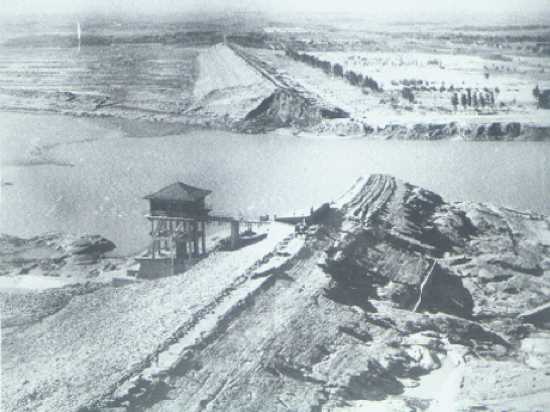
The Banqiao dam was completed in 1952. It was constructed to control flooding in the Huai River Basin in Henan province, China, and provided 18GW of power to the region. After initial construction, cracks appeared in the dam, and under the advice of Soviet engineers they were repaired and the dam was considered unbreakable and was known as ‘The Iron Dam.’
The dam was constructed to withstand 300mm of rainfall per day (a phenomenon occurring once every 1000 years), however in August 1975, resulting from Typhoon Nina, the province experienced 1060mm of rainfall in 24 hours (annually the area averages 800mm) . Nina had destroyed much of the communications network in the area and requests to open the dam did not reach the engineers based there. Smaller dams upstream began to break resulting in water at the Banqiao reaching 0.3m higher than the wave protection wall. 78,800 tons of water per second burst from Banqiao, the total water released from the failure of all 62 dams was 15.783 billion tons.
The surge of water resulted in waves 10km wide and 7m high traveling at 50kmph, destroying a stretch of land 55km long by 15km wide, and creating lakes up to 12,000 square kilometers. Evacuation orders could not be delivered in time due to communications failures.
Official estimates from China indicate approximately 26,000 people died as a result of the initial flood with up to 145,000 succumbing to subsequent epidemic and famine. 11,000,000 people were affected by the disaster. The film Dam999 was based loosely on the event.
Fatalities – 26,000-230,000
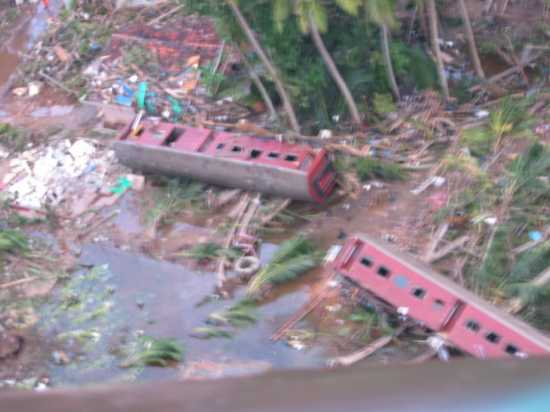
I have included this as a bonus, as although it was a result of a natural disaster, it is considered the worst rail disaster in history. It occurred during the Boxing Day Tsunami in 2004, It was not as a result of a train crash, but none the less accounts for the highest number of fatalities of any rail disaster in the history of locomotive travel. As the tsunami hit the village of Peraliya in Sri Lanka, water surged around the halted train. The passengers climbed on top of the train to avoid drowning inside, others used the train as a shield to protect them against the incoming torrent of water. They did not know however that this first wave was small in comparison to the 18 foot wave that followed. It picked the train up and carried in at a remarkable speed for 115km. Those that sheltered behind the carriage were crushed against trees and houses, those inside drowned as they were unable to escape through the doors as the train was so heavily packed with people. It was several hours before people realized the train was missing and days before assistance arrived; many of the initial survivors died during the following day. The estimated death toll was at least 1,700 and probably in excess of 2,000, however only 900 bodies were officially recovered.
Fatalities – 1,700 – 2,000+
I have included this as a bonus as it is not on the same scale as the rest of the list but it is my local city, so I decided to briefly mention it. The main stand at the Bradford City Football Club, Valley Parade was made of wood and by 1985 had not been changed in 74 years. The stand was due to be replaced after the last game of the season against Lincoln City on 11th May 1985, this was because of health and safety concerns over the amount of litter that had fallen between the gaps in the stand and its potential as a fire hazard. Just before half time a fire broke out in the main stand and within minutes had engulfed the entire stand. A video can be seen which demonstrates how quickly fire can spread, I have been told that the man who is walking around on fire only died because of internal injuries that he received resulting from other fans trying to extinguish him. 56 people died and 265 were injured. It is suspected that a fan dropped a cigarette or match between the gaps in the stand igniting the litter beneath.
Fatalities – 56

